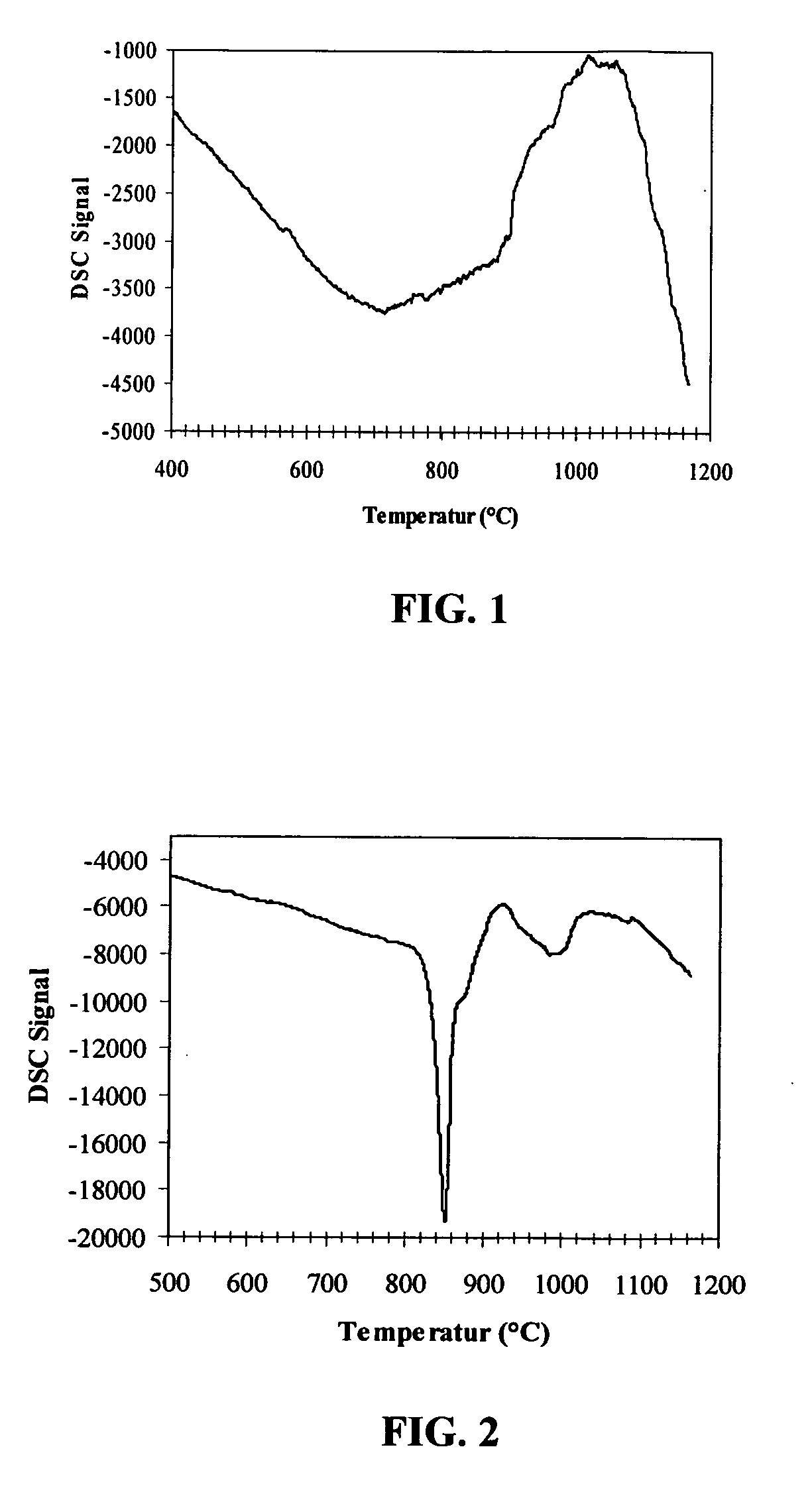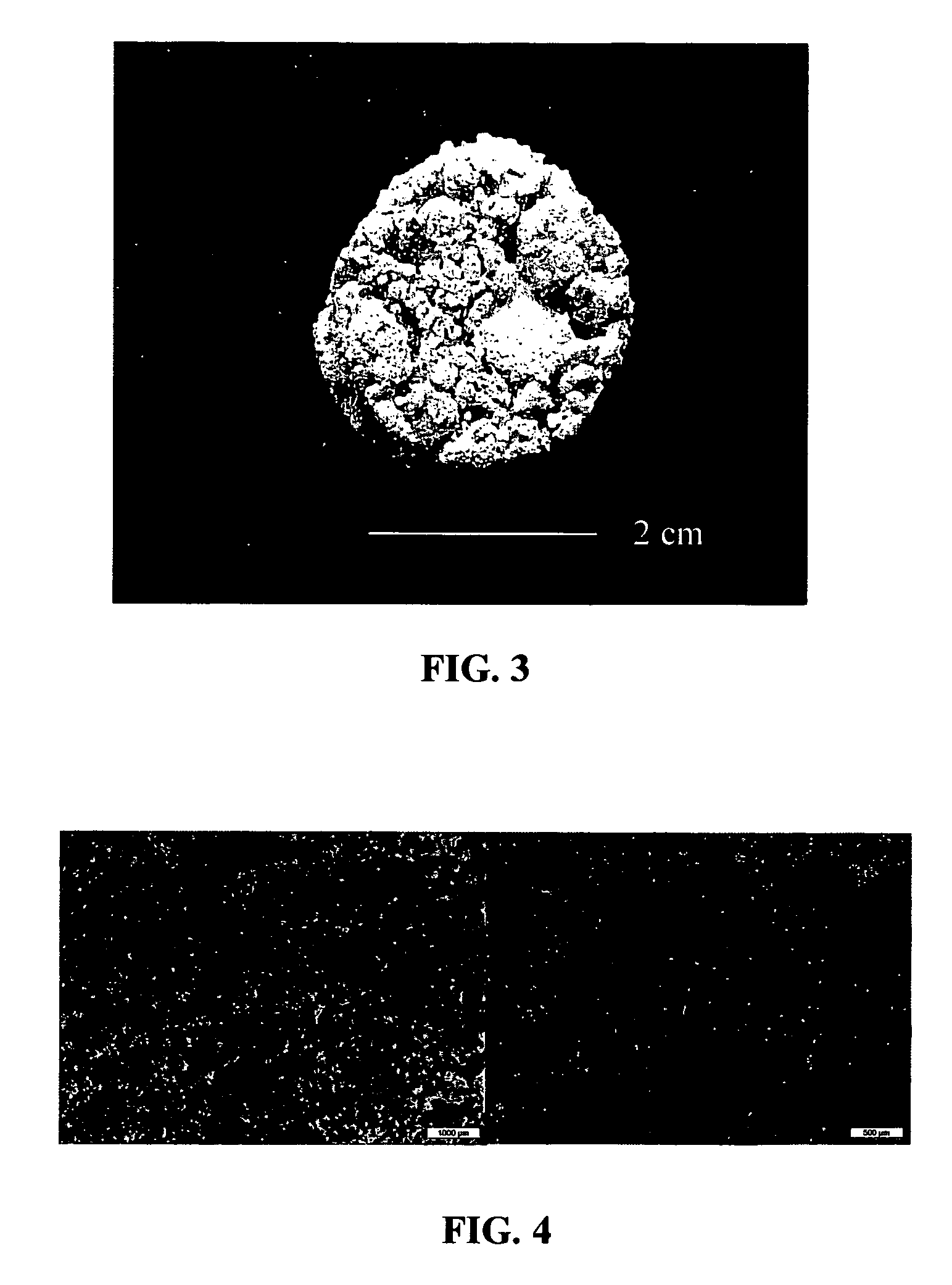Porous, heat-insulating shaped body, method for producing the shaped body and the use thereof
a technology of heat-insulating shaped bodies and porous materials, which is applied in the field of porous, heat-insulating shaped bodies, can solve the problems of less suitable, and achieve the effect of creating a comfortable room and living environmen
- Summary
- Abstract
- Description
- Claims
- Application Information
AI Technical Summary
Benefits of technology
Problems solved by technology
Method used
Image
Examples
Embodiment Construction
[0033]In a first embodiment, 2 g of expanded perlite and 2 g of sodium carbonate Na2CO3 are mixed together in a weight ratio of 1:1. The mixture is then tempered for 15 minutes at about 800° C. inside a cylindrical crucible in a chamber furnace. Depending on the quantity used, the duration of the tempering process is about 10 to 20 minutes. A dimensionally stable cylinder (FIG. 3) with pores in the micrometer range (FIG. 4) is thus obtained, in which sodium zeolite blooms (FIG. 5). Deviations by up to ±5 percent from the starting weight ratio are not important for the final result.
[0034]In a second embodiment, 2 g of natural perlite are mixed with 2 g of sodium carbonate Na2CO3 in a 1:1 weight ratio and tempered in a chamber furnace at about 850° C. for 20 minutes. Depending on the quantity used, the duration of the tempering process is about 15 to 30 minutes.
[0035]The DSC graph (differential scanning calorimetry) in FIG. 1 shows that expanded perlite begins to sinter at approximate...
PUM
| Property | Measurement | Unit |
|---|---|---|
| temperature | aaaaa | aaaaa |
| temperature | aaaaa | aaaaa |
| temperature | aaaaa | aaaaa |
Abstract
Description
Claims
Application Information
 Login to View More
Login to View More - R&D
- Intellectual Property
- Life Sciences
- Materials
- Tech Scout
- Unparalleled Data Quality
- Higher Quality Content
- 60% Fewer Hallucinations
Browse by: Latest US Patents, China's latest patents, Technical Efficacy Thesaurus, Application Domain, Technology Topic, Popular Technical Reports.
© 2025 PatSnap. All rights reserved.Legal|Privacy policy|Modern Slavery Act Transparency Statement|Sitemap|About US| Contact US: help@patsnap.com



